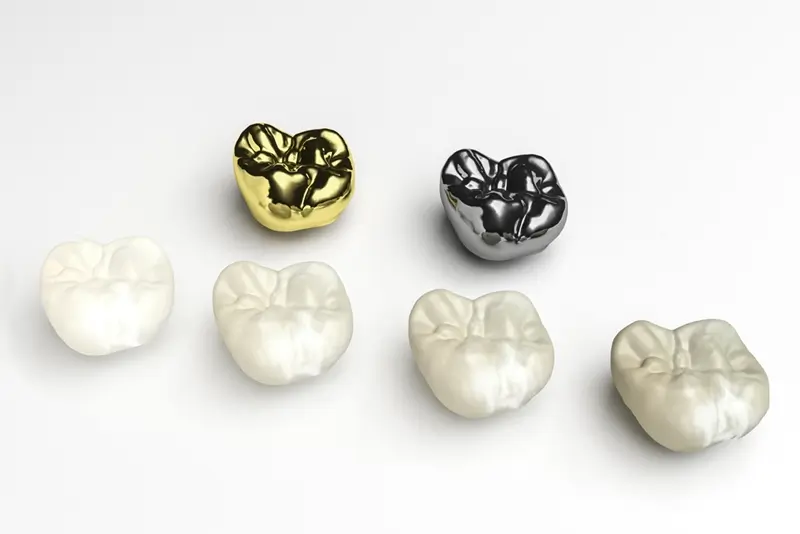Dental crowns are a fantastic and sometimes necessary dental technology designed to restore the shape and function of a tooth. Crowns are moulded and then cemented into place over a partial tooth or dental implant to imitate natural dentine.
This technology is common in restorative dentistry and can really help turn the appearance of someone's teeth around. That said, there are a range of materials available for dental crowns so not all will look exactly like natural teeth. Let's take a look at some of the many interesting dental crown materials.
Porcelain dental crowns
Porcelain, or all-ceramic, is a very popular choice of dental crown material due to its similar appearance to dental enamel. It results in the most life-like, aesthetically pleasing crowns for most patients.
Another key benefit of porcelain is that it's not highly reactive to heat or cold, so it can reduce temperature sensitivity that may otherwise be exacerbated if the crown is covering a damaged or replaced tooth.

One downside to porcelain is that it is one of the more brittle materials on the market. Compared to metal, for example, porcelain is more likely to fracture. This also means the crown needs to be thicker, so if it's to cover an existing tooth, the tooth will need to be made smaller before the crown can be fitted.
If you experience bruxism, porcelain may not be appropriate for you, as the material can cause significant wear on neighbouring teeth.
Metal (Gold) dental crowns
On the flip side of porcelain crowns, gold offers great durability for a less commonly preferred aesthetic.
It's no wonder gold has been used as a crown material for so long, as it's a highly durable material able to withstanding biting and chewing with little risk of breaking. It's also rarely reacted to – so patients with metal sensitivities need not worry.
Gold crowns are generally preferred for back teeth, as they're less visible. That said, appearance is always a personal choice – there's no reason you can't ask for a gold crown on one of your front teeth if desired.
With PFM, your crown will have the strength of metal and the aesthetic quality of porcelain.
Porcelain-fused-to-metal (PFM) dental crowns
Of course, when you combine two great things you get to enjoy the best of both worlds. With PFM, your crown will have the strength of metal and the aesthetic quality of porcelain. A small thimble of metal will be fitted over the site of the crown before a layer of porcelain is bonded to the metal.
The metal base of the crown provides much better strength than all-ceramic, helping to mitigate the risk of fracturing. While still not as strong as all-metal crowns, PFM are often more pleasant to look at thanks to the porcelain exterior.
One thing to note is the possibility of the "dark lines" phenomenon. On some occasions, the metal underlying the porcelain may become visible around the edges of the crown. Your dentist will generally aim to place the edge of the crown below the gum line – so this shouldn't occur unless your gums recede. The visible metal will be minor and won't affect the function of the crown.
New materials
There are many newer materials being used throughout the world – such as zirconia and lithium disilicate. These look to be the way of the future and the cutting edge of technology in terms of aesthetics! Due to its fantastic translucency, lithium disilicate in particular is almost indiscernible from natural dentine.
To discuss having a crown fitted or just for a regular check-up, book an appointment online or call us on 04 978 4964.
